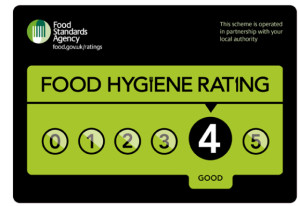Food porn: Portland’s restaurants are on the cutting edge of the culinary renaissance in Maine, where locally sourced ingredients and inventive dishes are prized by award-winning chefs and consumers.
 But efforts by health inspectors to bring local restaurants into compliance with federal regulations and reduce the risks of a potentially dangerous foodborne illness outbreak is splashing cold water on the sizzling creativity of many area chefs – at least temporarily.
But efforts by health inspectors to bring local restaurants into compliance with federal regulations and reduce the risks of a potentially dangerous foodborne illness outbreak is splashing cold water on the sizzling creativity of many area chefs – at least temporarily.
In recent months, hundreds of pounds of meat have been embargoed by health officials and are waiting in cold storage until restaurants can prove the food is safe. Several restaurants have been ordered to stop vacuum-sealing their meats, cooking sous vide dishes and offering some types of house-cured meats until they develop special hazard plans and in some cases get formal variances from the Maine Food Code.
“These are high-risk processes,” said Michael Russell, who oversees Portland’s restaurant inspection program. “In Portland, we noticed a growth in specialized processing two years ago and a significant increase in the number of establishments using these practices within the past year.”
The city’s crackdown has caught many restaurants off-guard, and there is no clear process for getting plans and variances from the state food code.
“It’s been an open secret that all of the best restaurants in Portland have been using techniques that are not approved by the FDA without variance and (special) plans,” said Brendan Murray, the head chef at Duckfat. “There is a huge amount of talent and dedication to serving the best food in the city. The level is rising rapidly and that’s a good thing.”
But do chefs know food safety?
Restaurants are required to develop special plans – called Hazard Analysis & Critical Control Points plans – for nearly 20 advanced food preparations, including vacuum-sealing, also known as reduced oxygen packaging, of raw and cooked meats on site, according to documents from the Maine Center for Disease Control and Prevention. Nine of those preparations, including pickling, curing meats and growing bean sprouts on site, also require a formal variation from the food code.
At the same time, efforts to increase the frequency and quality of Portland’s restaurant inspection program have led to cleaner, safer kitchens and more knowledgeable kitchen staffs, according to city officials and restaurant owners.
Since 2012, when the Portland Press Herald/Maine Sunday Telegram published a series of investigative reports about the city’s troubled restaurant inspection program, Portland has more than doubled the size of its inspection staff, visited restaurants more frequently and posted inspection reports online.
The paper revealed that many restaurants hadn’t been inspected for years and that, when the city hired its first health inspector in 2011, 19 out of the first 23 restaurants inspected failed – a failure rate of 82.6 percent. Since then, the failure rate has steadily improved. It was 45.5 percent in 2012 (40 out of 88 restaurants), 10.5 percent in 2013 (33 of 314) and just 6.4 percent in 2014 (31 of 482).
Restaurant owners and city officials say that’s happened because everyone is becoming more familiar with the standards.
 In 2011, the airport approved the hiring of two former city health inspectors, and the results have been dramatic.
In 2011, the airport approved the hiring of two former city health inspectors, and the results have been dramatic.








